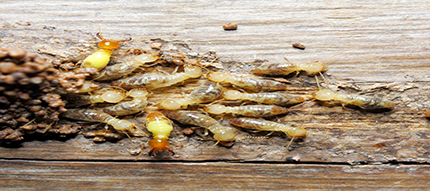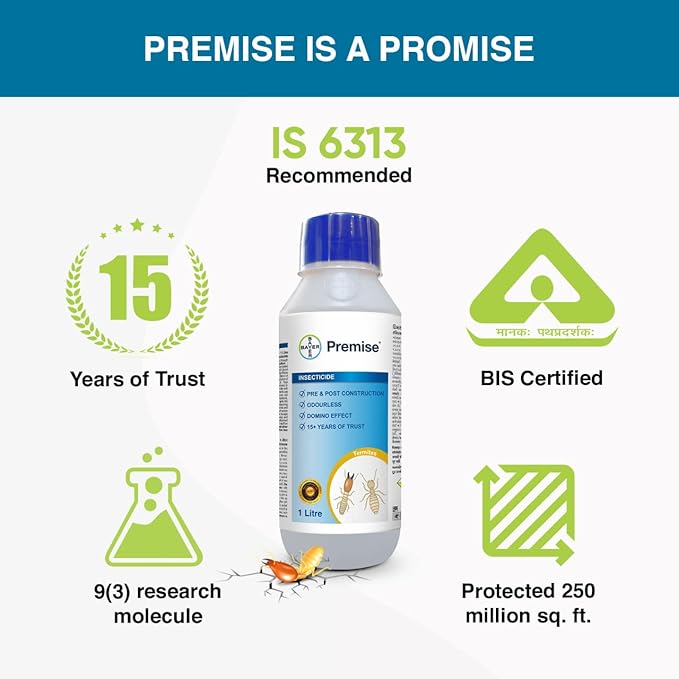
Termites have become a significant concern for homeowners and commercial property owners alike, as they can cause extensive damage to wooden structures. These tiny insects are notorious for their ability to silently infiltrate and destroy wooden components, often leaving devastating consequences in their wake.
In this blog, we will delve into the world of termite treatment chemicals, exploring the top 5 best options for protecting your wooden structures from these destructive pests.
Importance Of Termite Treatment Chemicals for Wood
Termite treatment chemicals are crucial for protecting wood structures from termite damage. These chemicals play a vital role in controlling termite infestations by creating barriers that prevent termites from accessing and damaging the wood. The importance of termite treatment chemicals for wood lies in their ability to:
- Prevent Infestation: Chemical treatments can be applied to wood during construction or as a preventative measure for existing structures. This helps prevent termites from colonizing and infesting the wood, thereby reducing the risk of damage.
- Eliminate Infestation: Chemical treatments can also be used to eliminate existing termite infestations. By applying chemicals directly to the infested area, termites are killed, and the infestation is eradicated.
- Long-Lasting Protection: Many termite treatment chemicals provide long-lasting protection against termite damage. This is particularly important for structures that are difficult to access or where termites are known to be prevalent.
- Effective Against Various Termite Species: Termite treatment chemicals are designed to be effective against various termite species, including subterranean and drywood termites. This ensures that the treatment is comprehensive and covers all potential termite threats.
- Reduced Risk of Damage: By using termite treatment chemicals, the risk of termite damage to wood structures is significantly reduced. This not only saves the structure from costly repairs but also prevents potential safety hazards.
- Environmental Considerations: Modern termite treatment chemicals are designed to be environmentally friendly, posing minimal risk to humans, pets, and the environment. This makes them a safer choice for termite control.
Chlorpyrifos 20% EC: A Repellent Insecticide
Chlorpyrifos 20% EC is a highly effective insecticide that targets a wide range of pests, including sucking, biting, chewing, and soil-dwelling insects, as well as termites. This versatile product is particularly useful as a liquid termite repellent, helping to protect your property from these destructive pests.
Proper Dilution and Application
To use Chlorpyrifos 20% EC effectively, it is important to follow the recommended dilution ratio. The product should be mixed with water in a 1:19 proportion, meaning that one liter of Chlorpyrifos 20% EC should be combined with 19 liters of water to create the desired solution. This diluted mixture can then be applied to the targeted areas, such as soil or termite-infested wood, to repel and eliminate the pests.
Safety Considerations
While Chlorpyrifos 20% EC is a powerful insecticide, it is designed to be safe for use when applied according to the instructions. However, it is always important to exercise caution when handling any pesticide and to follow the safety guidelines provided by the manufacturer. Proper personal protective equipment (PPE), such as gloves and a mask, should be worn during application to minimize exposure.
Termite Resistance and Adaptation
Despite the effectiveness of Chlorpyrifos 20% EC as a termite repellent, it is important to note that termites are highly adaptable organisms. Over time, some termite species may develop resistance to certain chemicals, including Chlorpyrifos. This resistance can be attributed to their ability to evolve and adapt to their environment, allowing them to find ways to survive even in the presence of repellent chemicals.
To maintain the effectiveness of Chlorpyrifos 20% EC against termites, it is recommended to use it as part of an integrated pest management (IPM) approach. This involves combining chemical control methods with other strategies, such as physical barriers, monitoring, and regular inspections, to prevent and manage termite infestations effectively.
Lindane 20% EC: A Repellent Insecticide
Lindane 20% EC is a liquid termiticide solution that is commonly used in pest control. When preparing this solution, one liter of Lindane 20% EC is typically mixed with 19 liters of water. It is important to note that Lindane acts as a repellent, meaning it has the ability to repel termites rather than directly eliminate them. This repellent property may limit its effectiveness in certain scenarios.
Usage and Application
Lindane 20% EC is primarily utilized for controlling sucking and chewing insects that infest a variety of fiber and cellulose-based materials such as furniture, flooring, and official documents. It is important to follow recommended application guidelines and safety precautions when using this product to ensure optimal results and minimize any potential risks associated with its use.
Effectiveness and Considerations
While Lindane can be effective in managing certain types of pests, its repellent nature may not make it the ideal choice for all situations. It is essential to consider the specific pest infestation, the environment in which it is being used, and any potential alternatives that may offer more targeted pest control solutions.
In conclusion, Lindane 20% EC is a liquid termiticide with repellent properties commonly used for controlling insects on various fiber and cellulose-based products. Understanding its characteristics, proper application methods, and limitations is crucial for achieving successful pest management outcomes.
Imidacloprid 30.5% SC: A Non Repellent Insecticide
Imidacloprid 30.5% SC is a potent insecticide commonly used for termite control. When preparing a solution, 10.5 ml of Imidacloprid 30.5% SC is diluted in 5 litres of water. This formulation offers a unique advantage as it acts as an anti-repellent, making it undetectable by termites.
Imidacloprid, the active ingredient in this formulation, is a systemic insecticide that targets the central nervous system of wood-eating pests. It works by binding strongly to the neuron receptors of termites, disrupting their nervous system and ultimately leading to their demise.
Importantly, Imidacloprid exhibits a higher affinity for termite receptors compared to those of mammals, making it more toxic to termites while posing low to medium toxicity risks to humans.
Difference Between Repellent And Non Repellent Insecticides
Repellent and non-repellent insecticides are two primary categories of pesticides used in pest control. The main difference between them lies in their mode of action and how they interact with the target pests.
Repellent insecticides are effective for controlling pests that are easily deterred by the chemical, while non-repellent insecticides are particularly effective for controlling pests like termites and ants where the nest and colony are not necessarily at the location where the activity is noticed.
Repellent Insecticides:
Repellent insecticides are designed to create a chemical barrier that repels pests from a specific area. They typically work quickly, often killing pests on contact. This type of pesticide is effective for controlling pests that are easily deterred by the chemical, such as mosquitoes, fleas, and ticks.
Repellent insecticides can be used in exposed areas like patios or outside furniture, but they are not suitable for heavily vegetated areas or areas with storage items, as the target pest might simply pass beneath them to an area where the pesticide did not reach .
Examples of repellent pesticides include Orange Oil, Pyrethrin, Bifenthrin, Chlorpyrifos 20% EC, and Lindane 20% EC .
Non-Repellent Insecticides:
Non-repellent insecticides, on the other hand, are designed to be carried away by the target pest back to its nest or colony, where it can affect the entire colony. This type of pesticide is particularly effective for controlling pests like termites and ants, where the nest and colony are not necessarily at the location where the activity is noticed.
Non-repellent insecticides do not kill on contact but rather take time to work, depending on the specific pesticide used. They do not disturb the pheromones left behind by pests, allowing them to continue their normal activities without detection .
Examples of non-repellent pesticides include Taurus SC, Termidor SC, Bayer Premise.
Which is the best termite killer chemical in India?
Understanding Bayer Premise
Bayer Premise is a highly effective termiticide that contains the active ingredient Imidacloprid. This powerful chemical works by disrupting the nervous system of termites, ultimately leading to their demise.
Benefits of Bayer Premise
- Effective Termite Control: Bayer Premise is known for its ability to eradicate termites swiftly and efficiently.
- Long-lasting Protection: Once applied, Bayer Premise provides lasting protection against termite infestations.
- Minimal Environmental Impact: Bayer Premise is designed to be environmentally friendly, ensuring minimal harm to the ecosystem.
How Bayer Premise Works
When termites come into contact with Bayer Premise, they unknowingly ingest the chemical, which then spreads throughout the termite colony. This process leads to the elimination of the entire termite population, making Bayer Premise a potent weapon in the fight against these destructive pests.



